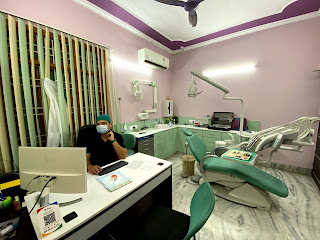The Benefits of Orthodontic Intervention for Preventing Malocclusion in Children at Age 11
Introduction:
Orthodontic intervention plays a crucial role in preventing and correcting malocclusion, or misalignment of the teeth and jaws. Early intervention, especially around the age of 11, can yield significant benefits for long-term oral health and overall well-being. In this blog, we will explore how orthodontic intervention at this age can help prevent the development of malocclusion.
1. Guiding Jaw Growth:
At age 11, children are still experiencing jaw growth. Orthodontic intervention can help guide this growth in a favorable direction, ensuring proper alignment and preventing malocclusion from worsening.
2. Correcting Misaligned Teeth:
Orthodontic appliances, such as braces or aligners, can effectively correct misaligned teeth at age 11. By applying gentle pressure, these appliances gradually move the teeth into their proper positions, improving both aesthetics and functionality.
3. Addressing Bite Issues:
Malocclusion often involves bite problems, such as overbite, underbite, or crossbite. Orthodontic intervention can address these issues by adjusting the position of the teeth and jaws, promoting a healthy bite and reducing the risk of future dental problems.
4. Preventing Dental Complications:
Malocclusion can lead to various dental complications, including tooth decay, gum disease, and temporomandibular joint (TMJ) disorders. By intervening at age 11, orthodontic treatment can help prevent these complications, ensuring a healthier smile in the long run.
5. Boosting Self-Confidence:
Misaligned teeth can have a significant impact on a child's self-esteem and confidence. By addressing malocclusion early on, orthodontic intervention can improve the appearance of the smile, boosting self-confidence and overall well-being.
Conclusion:
Orthodontic intervention at age 11 can play a crucial role in preventing the development of malocclusion and its associated dental complications. By guiding jaw growth, correcting misaligned teeth, addressing bite issues, and preventing future dental problems, early orthodontic treatment sets the foundation for a healthier smile and improved self-confidence. If you suspect your child may have malocclusion, consult an orthodontist to explore the best intervention options.





Comments
Post a Comment